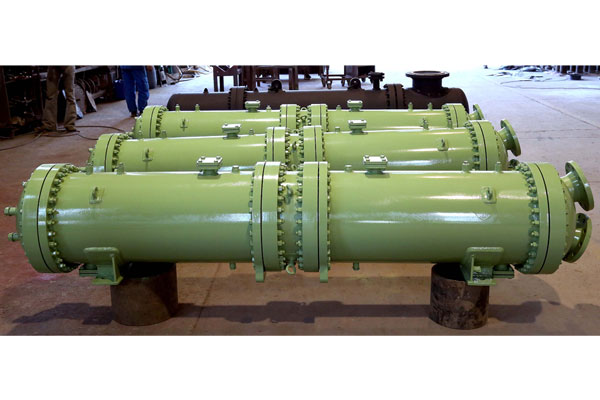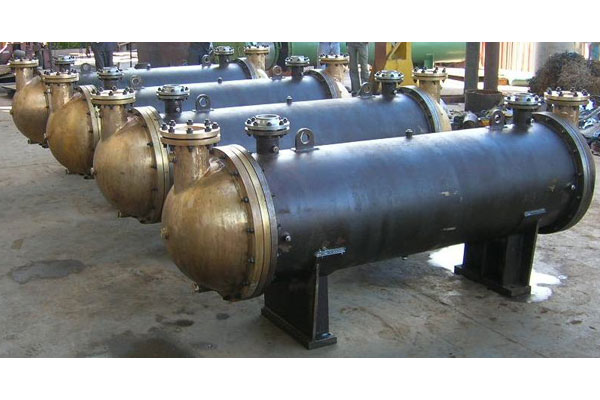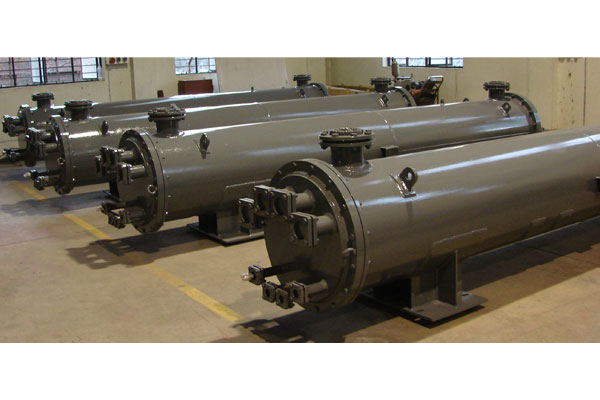Marine Heat Exchangers
Marine heat exchangers are the most common way to cool a boat’s/ship engine, using the lake, river or Sea water in which the boat floats. Direct cooling of the cylinders and heads by sea-water is unsatisfactory because sea water will eventually ruin the cylinder block and heads. Since this water may be corrosive the engine may be cooled by a sealed mixture of distilled/Fresh water and antifreeze. Heat from the water-antifreeze mixture is then transferred to the Sea (or lake or river) water which flows into a heat exchanger. The water-antifreeze mixture runs through the heat exchanger dumping heat, but remaining separate from corrosive salts and chemicals found in the water the boat is floating in. If the Sea water eventually corrodes and ruins the heat exchanger it can be replaced at a fraction of the cost of replacing the engine
To protect the marine heat exchanger from corrosive salts, a sacrificial zinc anode is screwed into the heat exchanger. This anode must be periodically replaced as part of regular maintenance.Because the water the boat floats in may be contaminated with floating particles such as wood or Styrofoam balls the well designed boat will have a filter (often stainless steel mesh) to remove these particles before they are moved toward the heat exchanger. This filter must be periodically cleaned or else the flow of water to the heat exchanger will become obstructed and the engine will overheat.
A consequence of using a heat exchanger on an in-hull marine engine is that there must be a thru-hull opening below the waterline to admit the sea water to the marine heat exchanger.Heat exchanger is the most common method, the sea-water being isolated in component (Shell/Bonnet) which can be designed to withstand its corrosive effect. The closed fresh water circuit can be thermostatically controlled so the engine operates at its design temperature.
Design Standards:
Section VIII Div. 1, Div. 2, TEMA RCB, IS 2825 & IS 4503.
We are manufacturer of the heat transfer equipments as per the TEMA (Tubular Exchanger Manufacturers Association) standards, ASME Section VIII Div. 1, Div. 2, (unfired pressure vessels), NES standards. We design marine heat Exchanger to resist shock impact load.
Material of Construction:
Size ranging from 3” to 100” in diameter & 40’ (Feet) in length.
Shell:
- 90/10 Cupronickel,
- 70/30 Cupronickel,
- Carbon steel,
- Stainless Steel
Tube Sheet:
- 90/10 Cupronickel,
- 70/30 Cupronickel,
- Carbon steel,
- Naval Brass
- Stainless Steel
Tubes:
- 90/10 Cupronickel,
- 70/30 Cupronickel,
- Copper
- Stainless Steel
- Al. Brass
- As per customer requirement
Channels / Headers/ End Covers:
- Cupronickel
- Nickel Aluminum Bronze
- Gunmetal-Naval Grade
- Graded Cast iron
- Carbon steel
- Stainless Steel



